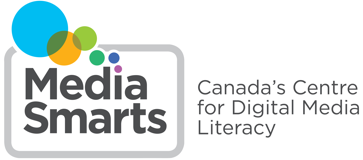Outcome Chart - Nova Scotia - Information and Communication Technology/Coding Integration 5
Digital Citizenship
Outcome 1: Students will understand and demonstrate behaviors which ensure their own and others health, safety and privacy.
- Create and maintain a secure online account for classroom use
- Demonstrate correct ergonomics
- Create and follow a personal plan around screen time, privacy expectations, and digital footprint awareness
- With teacher support use the strategies for the safe and efficient use of computers.
MediaSmarts Resources
- Data Defenders
- Game Time
- Stay on the Path Lesson One: Searching for Treasure
- Understanding the Internet Lesson 2: Pathways and Addresses
- Understanding the Internet Lesson 3: Build Understanding
- What Students Need to Know about Freedom of Information and Protection of Privacy (Grade 5) - Lesson
- Winning the Cyber Security Game
Outcome 2: Digital Citizenship Students will follow best practices of active digital citizenship as they interact and contribute in the digital - connected global world.
- With teacher assistance follow Public Network Access and Use Policy.
- Follow classroom guidelines regarding the acceptable use of digital tools.
- Exhibit legal and ethical behaviors when using information and ICT
- Understand the consequences of misuse.
MediaSmarts Resources
- Behaving Ethically Online: Ethics and Empathy
- Introduction to Ethics: Avatars and Identity
- Stay on the Path Lesson Four: Scavenger Hunt
Communication
Outcome 3: Students will use digital tools to communicate and work collaboratively, including at a distance, to support individual learning and to contribute to the learning of others.
- With teacher selected digital tools and support, communicate ideas and information using a variety of media and formats.
- Independently communicate and collaborate electronically with others inside and outside the classroom in teacher selected digital environments.
- Use appropriate communication etiquette.
- Develop cultural understanding and global awareness by engaging with learners of additional cultures
MediaSmarts Resources
- Avatars and Body Image
- Behaving Ethically Online: Ethics and Empathy
- Introduction to Ethics: Avatars and Identity
- Stay on the Path Lesson Four: Scavenger Hunt
- The Hero Project: Authenticating Online Information
Productivity and Innovation
Outcome 4: Students will use digital tools to plan, create, and publish their work both individually and collaboratively.
- Individually and collaboratively accomplish curriculum-based tasks with support by selecting and using digital tools.
- Use a range of media and digital tools
- Apply existing knowledge to generate new ideas, products, or processes.
MediaSmarts Resources
Research, Problem Solving, and Decision Making
Outcome 5: Students will use digital tools to gather, record, share and interpret information and data to support learning.
- Suggest words required to effectively search electronic sources while using internet search engines.
- Identify and distinguish points of view expressed in electronic sources on a particular topic.
- Analyze electronic sources for accuracy or relevance to the purpose
- Create and use simple organizers and outlines.
Outcome 6: Students will demonstrate problem solving skills using digital tools both individually and collaboratively.
- Use teacher selected digital tools to support problem solving individually and collaboratively
MediaSmarts Resources
- Stay on the Path Lesson Four: Scavenger Hunt
- Stay on the Path Lesson One: Searching for Treasure
- Stay on the Path Lesson Three: Treasure Maps
- The Hero Project: Authenticating Online Information
Coding
Outcome 8: Students will understand and apply the basic concepts of computer science, including algorithms, abstraction, and computational thinking.
- With support, analyze an event or task and identify the steps required to complete it.
- Predict the behavior or outcome of a coding sequence.
- Recognize and offer solutions to multiple errors in their own code and that of others.
- Use “and”, “or” statements and “for” loops to construct a set of statements to be acted out to accomplish a task.
- With support include variables in a sequence of their own code
- Recognize that programming occurs in a variety of coding languages and that each language has different iterations that achieve the same result.
MediaSmarts Resources
